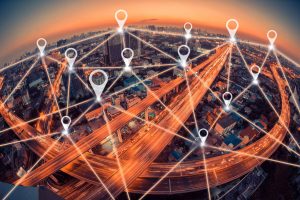 As we enter the era of “everything connected,” we cannot forget that gathering data is not enough. We need to process that data to gain new knowledge and build our competitive advantage. The Internet of Things is not just a consumer thing – it also makes our businesses more intelligent.
As we enter the era of “everything connected,” we cannot forget that gathering data is not enough. We need to process that data to gain new knowledge and build our competitive advantage. The Internet of Things is not just a consumer thing – it also makes our businesses more intelligent.
Whenever we approach the idea of competing on analytics and building unconventional business strategies, we come up with one simple outcome – we need to be smarter in whatever we do. Looking at business models over time, they all get more complicated, more fuzzy. But what is constant is that every decision is based on past experiences and is driven by data and analytics.
Being smarter can have many faces. Let’s take a look at just three of them.
Smarter operations
Improving business position through optimized, tailored business processes is a perfect strategy for competing in an increasingly commoditized market. Of course, you should not limit yourself to just that activity – but excelling at this can gain you some time before the next market change.
Oil and gas companies see that opportunity. By reducing downtimes, they improve revenue streams, optimize production costs and work smart – all because analytics keeps watch over their equipment.
Smarter services and products
The Internet of Things also gives us opportunity to deliver unique products and services. Octo Telematics delivers usage-based insurance products connecting customers' cars to an analytics infrastructure. The insurance product is then calculated based on driving style. Without analytics and the ability to gather drive-time data, this would not be possible. This new product is a game changer for the insurance industry - quite an innovative way to escape the price competition.
Smarter life
Connected analytics is not always connected with maximizing profit. In Christchurch, New Zealand, there is a Sensing City that is constantly monitored for noise, air pollution, water use, traffic conditions and other quality-of-life aspects. That data is made public and open, so anyone can look into the city’s pulse, or use the information to build and deliver new services and applications. Clearly, the Internet of Things can become the Internet of Life for any of us. Wouldn’t you be willing to live in a city like this?
The technology behind it
All that smartness mentioned above is already available in current technologies. Data streams generated from the connected world can be stored within big data platforms. It can be processed with high-performance analytical tools, and technologies like event-stream processing to provide real-time actions and alerts. Then, data visualization and in-memory analytics can deliver easy-to-interpret results that everyone can understand.
Read an article – The future of IoT: On the edge
